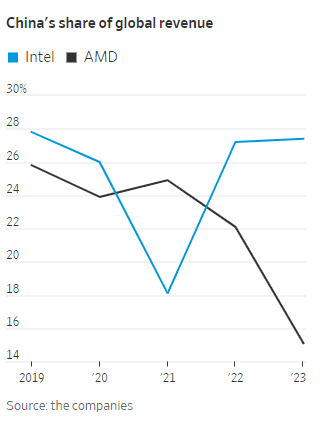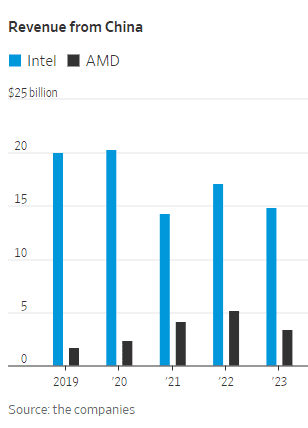China
ZTE reports higher earnings & revenue in 1Q-2024; wins 2023 climate leadership award
China’s ZTE reported 3.7% higher Q1-2024 earnings of 2.7 billion Chinese yuan (US$380 million), with sales up 5% to RMB30.6 billion ($4.2 billion).
With decreased CAPEX from China’s network operators, ZTE accelerated its transition from full connectivity to “connectivity + computing power” ino order to expand its addressable market.
Internationally, ZTE said it “continued to achieve continuous breakthroughs with major telecom operators in key countries, sustaining its growth trend. Simultaneously, in terms of government-enterprise business and consumer business, the company intensified its expansion in these two sectors, with both segments returning to rapid growth paths.”
That’s in sharp contrast to its European network equipment rivals, who have been exposed by the worldwide 5G wind-down. Nokia lost a fifth of its revenue in Q1; Ericsson reported a 14% slide, with network sales off by 19%.
ZTE didn’t break out its segment figures for Q1, but its 2023 full-year filing showed it remains heavily reliant on its home market, which contributed just under 70% of total revenue. Both ZTE and Huawei derive at least 80% of network spending by China’s state-owned telco giants (China Mobile, China Telecom, China Unicom).
ZTE, leveraging its long-term accumulation of ICT full-stack full-domain capabilities, is pursuing strategic opportunities in digitization, intelligence, and decarbonization. Keeping pace with the wave of AI development, the company deepens its business layout of “connectivity + computing power,” providing global customers in high-speed networks, computing infrastructure, and industrial digital transformation with an open and innovative intelligent network foundation.
ZTE says it’s committed to deeply integrating AI technology with terminals to drive product innovation and intelligent upgrades, thus constructing a smart ecosystem. For terminals, ZTE has proposed the concept of “AI for All,” launched an AI-driven all-scenario intelligent ecosystem 3.0, and released a variety of innovative products and technologies.
In the first quarter of 2024, the company’s research and development expenses were RMB 6.38 billion, accounting for 20.9% of operating revenue. That provided sustained strong impetus for business innovation and product enhancement/competitiveness.
Moving forward, ZTE says it is committed to actively embracing the digital construction wave, accelerating its transition towards “connectivity + computing power,” thereby driving the company’s high-quality development. The company will continue collaborating with industry partners to establish highly efficient, green, and intelligent digital infrastructure, aiming to advance the development of the global ICT industry.
……………………………………………………………………………………………………..
Separately, ZTE was honored with 2023 Climate Leadership Award (A list) at “Embracing International Disclosure Standards and Amplify the Voice of Chinese Companies – CDP China 2023 Annual Report Release and Award Ceremony.” This recognition comes as ZTE’s case study, “Target-Driven, Layered Decoding: Pathways and Actions to Achieve Climate Goals” was featured in 2023 CDP China Corporates Disclosure Report. The event further acknowledged ZTE’s outstanding contributions to climate change mitigation and sustainable development.
Summer Chen, Vice President and General Manager of Branding & PR Strategies at ZTE, shared the company’s actions and leadership in promoting green innovations during her speech titled “Shaping Digital Innovation for a Shared Sustainable Future.” She stated, “Green and sustainable development is a global consensus, with digital intelligence playing a pivotal role. In line with this trend, ZTE has dedicated itself to green and low-carbon innovations, and received an A rating for its leading climate action in CDP Climate Change 2023 Questionnaire, an honor achieved by only 2% of global participants.”
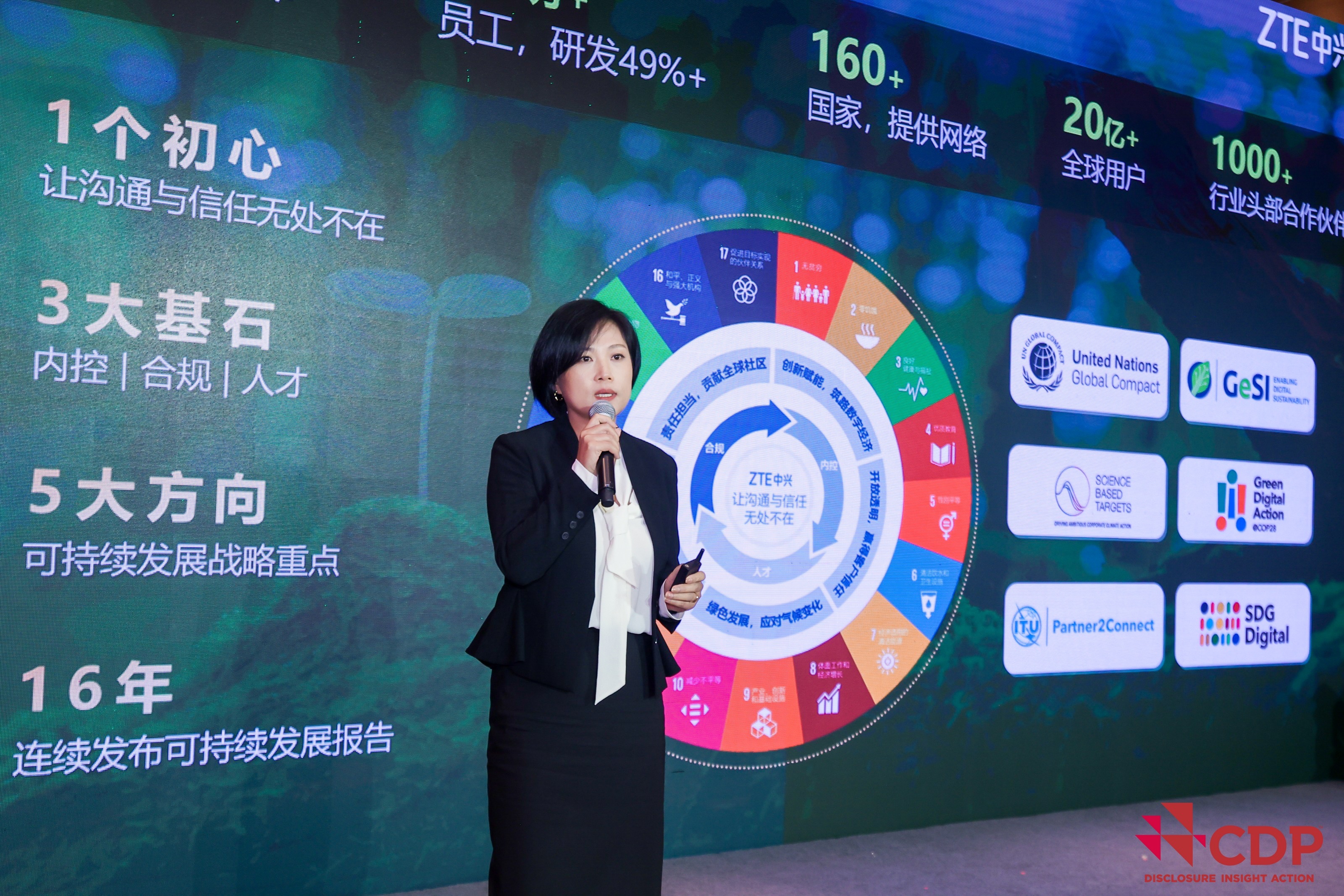
Ms. Chen emphasized ZTE’s commitment to green development, leveraging technological innovation to shape an eco-friendly ecosystem. This commitment is underpinned by four dimensions: green operations, green supply chain, green digital infrastructure and green empowerment, contributing to achieve carbon peak and carbon neutrality goals. ZTE focuses on energy conservation and carbon reduction within its business operations, while empowering industries to foster new quality productive forces, aiming to set a global benchmark as a green, sustainable, and low-carbon tech company.
References:
https://www.zte.com.cn/content/dam/zte-site/investorrelations/en_quarter_report/20240425.pdf
https://www.zte.com.cn/global/about/news/zte-scoops-2023-climate-leadership-award-a-list.html
https://www.lightreading.com/finance/zte-defies-capex-slump-with-higher-q1-earnings-revenue
https://www.zte.com.cn/content/dam/zte-site/investorrelations/en_annual_report/20240326.pdf
China Mobile & ZTE use digital twin technology with 5G-Advanced on high-speed railway in China
Türk Telekom and ZTE trial 50G PON, but commercial deployment is not imminent
ZTE sees demand for fixed broadband and smart home solutions while 5G lags
Vodafone Idea (Vi) to launch 5G services “soon;” Awards optical network equipment contract to ZTE
TM and ZTE Malaysia to develop next-gen hybrid cloud 5G core network
China Mobile reports record operating revenues in 1st Quarter 2024
China Mobile, the world’s largest operator in terms of subscribers, recorded operating revenues of CNY263.7 billion ($36.4 billion) in the first quarter of the year, an increase of 5.2% year-on-year, the carrier said in its earnings statement. The company’s net profit increased 5.5% year-on-year to CNY29.6 billion. Also, the telco reported that revenue from telecommunications services was CNY219.3 billion, up by 4.5% year-on-year. The telco ended the first quarter of the year with a total of 488 million 5G subscribers. China Mobile had reported a net addition of 138 million 5G subscribers during 2023. In the mobile segment, the telco reached a total of 996 million subscribers at the end of March 2024, after an addition of 5 million customers during the first quarter.
Highlights:
- Adopt a strategy-led approach, driving new milestones in business performance
- Leverage innovation, deepening strategic transformation with remarkable results
- Expedite further business upgrade, facilitating mutual advancement of the “two new elements”
- Achieve breakthroughs amidst adversity, yielding fruitful results from innovation and reform Dedicated to enhancing shareholder returns, using a multi-pronged approach Forge ahead with determination, accelerating the building of a world-class enterprise
Mr. Yang Jie, Chairman of the Company commented, “In 2023, despite various challenges faced by the Company in a complex and severe macro- environment, we seized the opportunities emerging from accelerated economic and social digital transformation. This helped anchor us in our position as a world class information services and sci-tech innovation enterprise. Our efforts were focused on fully implementing our “1-2-2-5” strategy and strengthening innovation and core competitiveness to promote high-quality and sustainable development. Our business results reached new milestones, with revenue surpassing the RMB trillion mark for the first time in our history of development, and net profit attaining a record high. In terms of operations, our strategic transformation, reforms and innovation all advanced to a new level, underscoring our solid progress in establishing a world-class enterprise that takes pride in outstanding products, reputable brands, leading innovation and modern governance.”
“The Group will continue to pursue stable progress while forging ahead with a steadfast focus on integrity and innovation. We will enhance core functions, improve core competitiveness, expedite the cultivation and growth of emerging sectors of strategic importance, develop new quality productive forces at an accelerated pace, and establish ourselves as a world-class information services and sci-tech innovation enterprise to a high standard. With these efforts, we will consistently create greater value for our shareholders and customers,” the China state owned telco said.
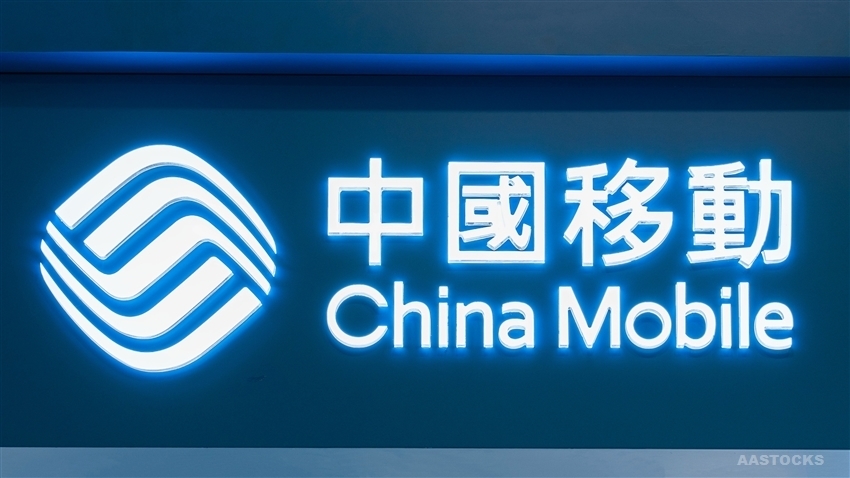
China Mobile plans to launch 5G-Advanced (5G-A) technology in over 300 cities across China this year, according to local press reports. The telco, which claims a leading role in the development of 5G-A 3GPP specifications, also plans to promote the release of over 20 5G-A compatible phones within the year. To showcase its new 5G-A network, China Mobile has established 5G-A demonstration halls in various locations across China.
China Mobile’s vice president, Gao Tongqing, stated that this launch will further accelerate the development of new information infrastructure and unlock the full potential of 5G technology. The carrier also said it aims to achieve widespread adoption of 5G-A technology in China through partnerships with manufacturers and chip suppliers.
Beijing, Shanghai and Guangzhou are among the first cities where China Mobile will activate the new technology.
China had a total of 11.6 million mobile communication base stations as of the end of last year, of which 3.4 million were 5G base stations. 5G base stations currently account for nearly 29% of total mobile base stations in China. The ratio is 7.8 percentage points higher compared to the end of 2022.
Future Outlook:
The impact of the new wave of technological revolution and industrial reforms will continue to grow, so will the importance of integrated innovation. The three aspects of this integrated innovation will be highlighted in the power of information, the new generation information technology, and the merger of information service and social operation systems. At the same time this integrated innovation will deepen in three directions – the applications of a new generation of information technology to rapidly form new growth momentum, the collaboration of industry, academia, research and application to foster a new innovation paradigm, and the integration of digital and real economy to open up new development opportunities.
China Mobile sees valuable opportunities as they expand our information services. With the advocacy of the national “AI+” initiative and the further accelerated advancement of Digital China, the industry experiences new growth potential from the development of new quality productive forces. This progress brings forth the emergence of data as a new factor of production, computility as a new fundamental energy source and AI as a new instrument of production. The information services industry has not only in itself become an important sector for the development of new quality productive forces, but also a strong support for other sectors in this pursuit. General AI, particularly represented by AI large models, is developing robustly.
The role of AI is also fast changing from an assisting tool that helps different industries improve quality and efficiency, to an indispensable infrastructure and core capability that supports economic and social transformation and development. While AI brings forth disruptive applications, “AI+” opens up vast blue-ocean of opportunities. Fixating the vision of building a world-class information services and sci-tech innovation enterprise, we will capture opportunities arising from the development of “AI+” and extending our “5G+” initiatives towards 6 this direction. We will identify a new roadmap of transformation and upgrade through comprehensive, systematic and deep-dived integrated innovation. In doing so, we will drive more creation to enrich life, enhance quality production and support precise governance powered by digital intelligence. We will satisfy, drive and create demand to form a new for value growth trajectory and fuel the future development of the Company.
References:
p240321.pdf (chinamobileltd.com)
https://www.rcrwireless.com/20240423/carriers/china-mobile-q1-revenues-up-5-year-on-year
China Mobile & ZTE use digital twin technology with 5G-Advanced on high-speed railway in China
China Mobile & China Unicom increase revenues and profits in 2023, but will slash CAPEX in 2024
China Mobile verifies optimized 5G algorithm based on universal quantum computer
China Mobile to deploy 400G QPSK by the end of 2023
Omdia: China Mobile tops 2023 digital strategy benchmark as telcos develop new services
WSJ: China’s Telecom Carriers to Phase Out Foreign Chips; Intel & AMD will lose out
China’s largest telecom firms were ordered earlier this year to phase out foreign computer chips from their networks by 2027. That news confirms and expands on reports from recent months. It was reported in the Saturday print edition of the Wall Street Journal (WSJ). The move will hit U.S. semiconductor processor companies Intel and Advanced Micro Devices. Asia Financial reported in late March that these retaliatory bans would cost the U.S. chip firms billions.
The deadline given by China’s Ministry of Industry and Information Technology (MIIT) aims to accelerate efforts by Beijing to halt the use of such core chips in its telecom infrastructure. The regulator ordered state-owned mobile operators to inspect their networks for the prevalence of non-Chinese semiconductors and draft timelines to replace them, the people said.
In the past, efforts to get the industry to wean itself off foreign semiconductors have been hindered by the lack of good domestically made chips. Chinese telecom carriers’ procurements show they are switching more to domestic alternatives, a move made possible in part because local chips’ quality has improved and their performance has become more stable, the people said.
Such an effort will hit Intel and AMD the hardest, they said. The two chip makers have in recent years provided the bulk of the core processors used in networking equipment in China and the world.
China’s MIIT, which oversees the regulation of the wireless, broadcasting and communication industries, didn’t respond to WSJ’s request for comment. China Mobile and China Telecom , the nation’s two biggest telecom carriers by revenue, also didn’t respond.
In March 2023, the Financial Times reported China is seeking to forbid the use of Intel and AMD chips, as well as Microsoft’s operating system, from government computers and servers in favor of local hardware and software. The latest purchasing rules represent China’s most significant step yet to build up domestic substitutes for foreign technology and echo moves in the US as tensions increase between the two countries. Among the 18 approved processors were chips from Huawei and state-backed group Phytium. Both are on Washington’s export blacklist. Chinese processor makers are using a mixture of chip architectures including Intel’s x86, Arm and homegrown ones, while operating systems are derived from open-source Linux software.
Beijing’s desire to wean China off American chips where there are homemade alternatives is the latest installment of a U.S.-China technology war that is splintering the global landscape for network equipment, semiconductors and the internet. American lawmakers have banned Chinese telecom equipment over national-security concerns and have restricted U.S. chip companies including AMD and Nvidia from selling their high-end artificial-intelligence chips to China.
China has also published procurement guidelines discouraging government agencies and state-owned companies from purchasing laptops and desktop computers containing Intel and AMD chips. Requirements released in March give the Chinese entities eight options for central processing units, or CPUs, they can choose from. AMD and Intel were listed as the last two options, behind six homegrown CPUs.
Computers with the Chinese chips installed are preapproved for state buyers. Those powered by Intel and AMD chips require a security evaluation with a government agency, which hasn’t certified any foreign CPUs to date. Making chips for PCs is a significant source of sales for the two companies.
China Mobile and China Telecom are also key customers of both chip makers in China, buying thousands of servers for their data centers in the country’s mushrooming cloud-computing market. These servers are also critical to telecommunications equipment working with base stations and storing mobile subscribers’ data, often viewed as the “brains” of the network. Intel and AMD have the lion’s share of the overall global market for CPUs used in servers, according to data from industry researcher TrendForce. In 2024, Intel will likely hold 71% of the market, while AMD will have 23%, TrendForce estimates. The researcher doesn’t break out China data.
China’s localization policies could diminish Intel and AMD’s sales in the country, one of the most important markets for semiconductor firms. China is Intel’s largest market, accounting for 27% of the company’s revenue last year, Intel said in its latest annual report in January. The U.S. is its second-largest market. Its customers also include global electronics makers that manufacture in China.
In the report, Intel highlighted the geopolitical risk it faced from elevated U.S.-China tensions and China’s localization push. “We could face increased competition as a result of China’s programs to promote a domestic semiconductor industry and supply chains,” the report said.
References:
https://www.wsj.com/tech/china-telecom-intel-amd-chips-99ae99a9 (paywall)
https://www.ft.com/content/7bf0f79b-dea7-49fa-8253-f678d5acd64a
China Mobile & China Unicom increase revenues and profits in 2023, but will slash CAPEX in 2024
GSMA: China’s 5G market set to top 1 billion this year
MIIT: China’s Big 3 telcos add 24.82M 5G “package subscribers” in December 2023
China’s telecom industry business revenue at $218B or +6.9% YoY
China Mobile & China Unicom increase revenues and profits in 2023, but will slash CAPEX in 2024
China Mobile increased revenue 7.7% to 1.009 trillion Chinese yuan (US$140 billion) in 2023, with earnings up 3.7%. China Mobile’s biggest growth drivers were cloud computing and storage, which grew 66% to RMB83 billion ($11.5 billion), and 5G enterprise, which hiked sales by 30% to RMB47.5 billion ($6.6 billion). It also revealed it had earned RMB5.4 billion ($750 million) in 5G private networking revenue, up 113%. Its “new business” segment, which covers international, investments and applications, expanded 28% to RMB49.3 billion ($6.9 billion).
China Mobile’s capital spending was RMB180.3 billion ($25 billion), a 2.6% decrease from 2022. It gave no guidance for 2024, but CAPEX will surely decrease in 2024 and coming years due to a recent change to retain existing 5G network equipment longer than previously planned.
China Mobile’s Board on Thursday voted to extend the depreciable life of its 5G assets from seven years to ten years, based on the belief that much of its 5G network equipment will continue to be deployed after the arrival of 6G (IMT 2030) at the end of this decade (or later). The state owned telco said it expects “that 5G network investments shall be reused in 6G network infrastructure to the maximum extent, and therefore it is expected that 5G/6G networks will coexist after commercialization of 6G and 5G equipment will have a relatively long life cycle.”
The immediate effect of this decision will be to cut a massive 18 billion yuan ($2.5 billion) out of China Mobile’s depreciation bill this year. It’s the first time any major telco has formally declared that not only is it reluctant to spend on new 6G equipment, but that it also intends to keep its 5G assets as long as possible. That sends a clear warning that in the aftermath of the 5G capex binge, telcos have little appetite for big technology bets without a clear ROI.
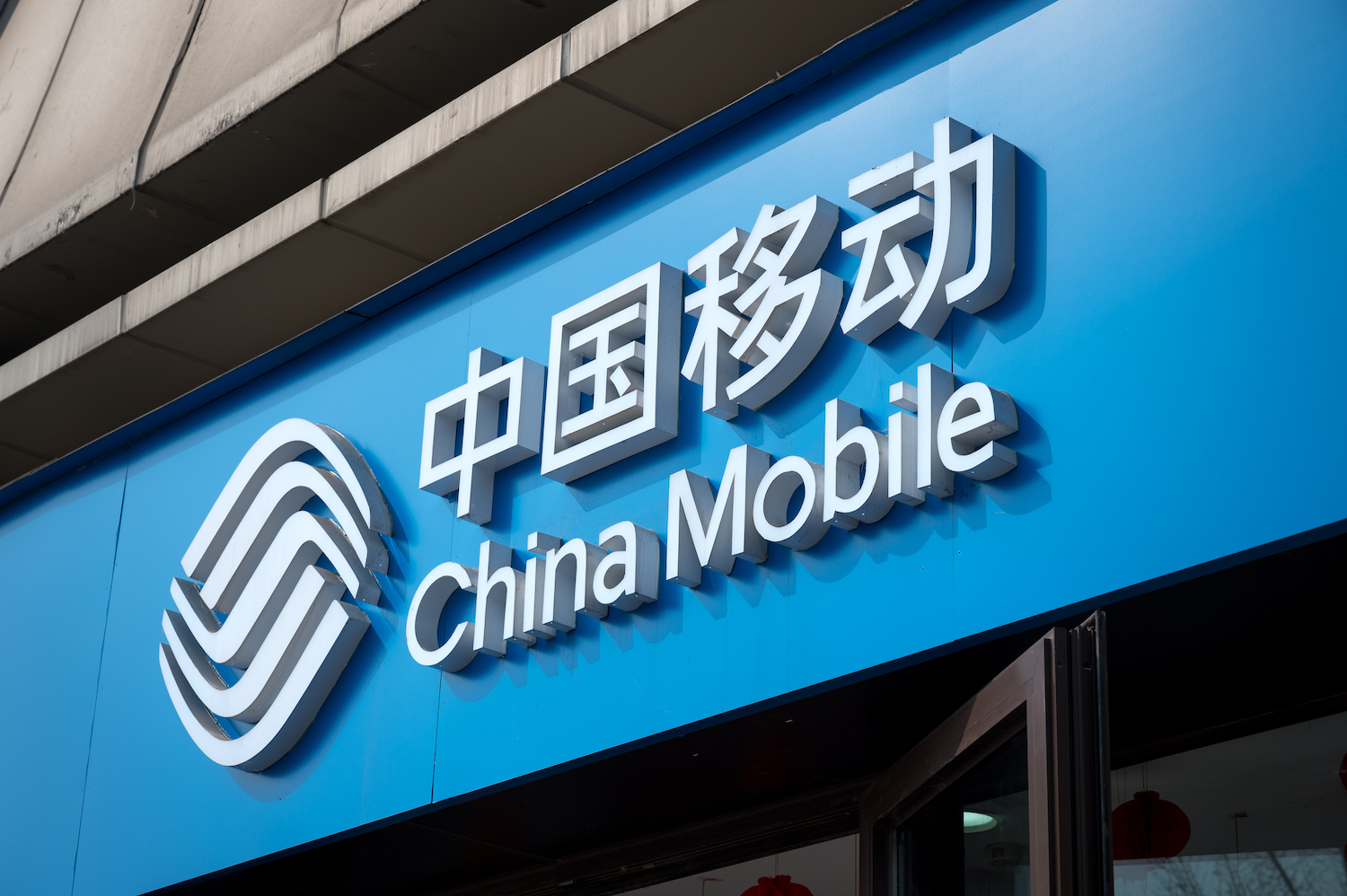
…………………………………………………………………………………………………………………..
Meanwhile, China Unicom boosted net profit by 11.8% and topline revenue by 5.0%. Unicom said it had grown its cloud business by 42% to RMB51 billion ($7.1 billion), while its new computing and digital services business recorded RMB75 billion ($10.4 billion) in sales, up 13%.
“With 5G network coverage nearing completion, the Company’s investment focus is shifting from stable Connectivity and Communications (CC) business to high-growth Computing and Digital Smart Applications (CDSA) business. CAPEX was RMB73.9 billion in 2023. Network investment saw an inflection point.”
In 2023, Connectivity and Communications (CC) business, which encompasses mobile connectivity, broadband connectivity, TV connectivity, leased line connectivity, communications services as well as information services, achieved revenue of RMB244.6 billion. It contributed to three quarters of the service revenue of CC and CDSA combined. The Company’s connectivity scale further expanded, with the total number of CC subscribers exceeding one billion, representing an increase of about 140 million from the end of 2022.
China Unicom capital spending was flat at RMB73.9 billion ($10.3 billion), and it revealed it will slash CAPEX this year by RMB8.9 billion ($1.2 billion) or 12%.
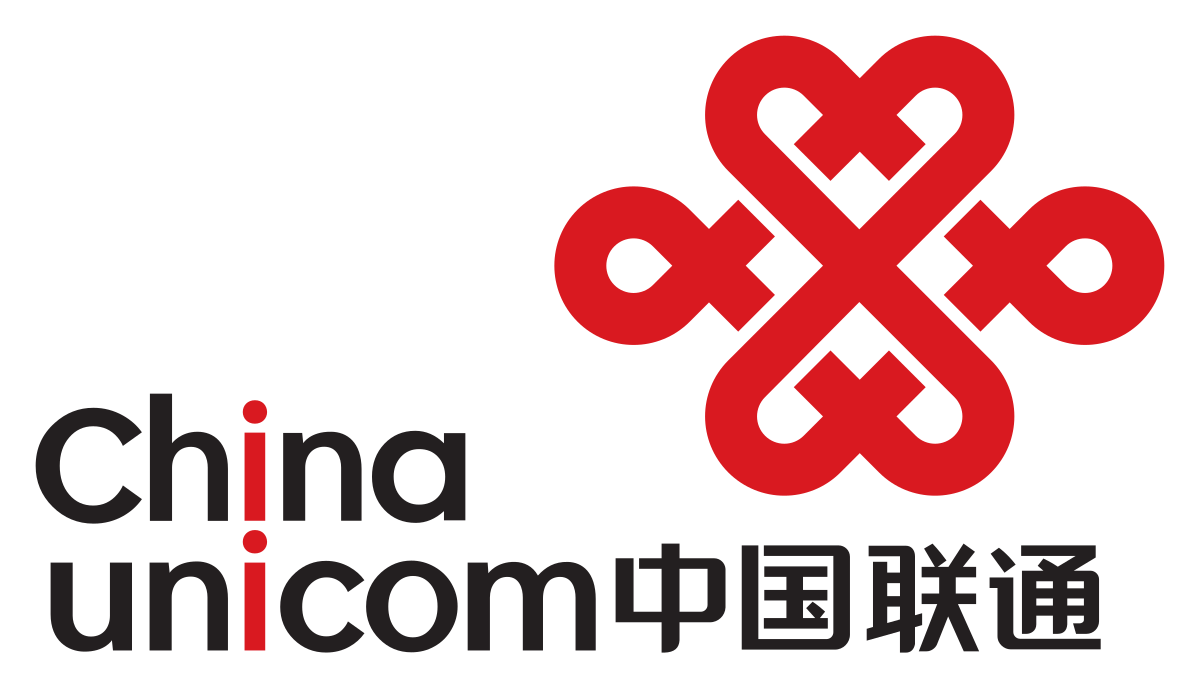
References:
https://www.lightreading.com/5g/china-mobile-unicom-raise-red-flags-on-network-spend
https://www1.hkexnews.hk/listedco/listconews/sehk/2024/0321/2024032100246.pdf
https://www1.hkexnews.hk/listedco/listconews/sehk/2024/0319/2024031900241.pdf
MIIT: China’s Big 3 telcos add 24.82M 5G “package subscribers” in December 2023
China Mobile verifies optimized 5G algorithm based on universal quantum computer
Omdia: China Mobile tops 2023 digital strategy benchmark as telcos develop new services
China Unicom & Huawei deploy 2.1 GHz 8T8R 5G network for high-speed railway in China
MIIT: China’s Big 3 telcos add 24.82M 5G “package subscribers” in December 2023
China’s three state owned telecom operators have announced their subscriber totals for the month of December and for all of 2023. China’ Ministry of Industry and Information Technology (MIIT) said the big three had a combined net increase of approximately 24.82M 5G package subscribers in China, boosting their combined 5G package subscriber base to nearly 1.373B.
As of the end of December, 5G package subscribers accounted for 80.2% and 78.1% of China Mobile’s and China Telecom’s total mobile subscriber bases, respectively.
C114.net reported that 3.377 million 5G base stations have been built, constituting 28.5 percent of the total mobile base stations. There are 23.02 million ports with gigabit network service capabilities. More than 80% of administrative villages nationwide now have 5G connectivity, telecoms portal.
The foundation of the Internet of Things (IoT) is constantly being consolidated, with mobile IoT terminal users accounting for 57.5% of the total number of mobile network terminal connections. Technological industry innovation and development, the commercial deployment of 5G customized base stations and 5G lightweight technology, and the launch of the world’s first satellite communication smartphone, 6G, quantum communication, artificial intelligence and other innovative capabilities have significantly improved.
- China Mobile ended last year with 794.5 million subscribers to its 5G package (contract), while its total mobile subscriber base reached 991 million.
- China Telecom had a total of 407.7 million mobile users, of which 318.66 million had signed up to a 5G package (up by 50.7 million during 2023).
- China Unicom’s 5G package subscriber total hit 259.6 million by the end of last year, though disclosure on total mobile subscribers has not been provided. China Unicom also reported that there were 8,563 “virtual 5G industry private network” subscriber for the month of December which was an increase of 554 month-on-month and up 4,758 since the end of 2022.
Mobile Subscriber Stats for China’s Three Main Carriers (Unit: Millions)
| Operator | December 2023 Month-end Total |
% of Combined Installed 5G Sub Base |
December 2023 Net Change |
Net Change Since Prior Year-End |
|---|---|---|---|---|
| China Mobile | 991.00 | 0.05 | 15.99 | |
| 5G Package Subs | 794.50 | 57.87% | 15.70 | 180.50 |
| China Telecom | 407.77 | 0.54 | 16.59 | |
| 5G Package Subs | 318.66 | 23.21% | 4.03 | 50.70 |
| China Unicom | Not Available | |||
| 5G Package Subs | 259.64 | 18.91% | 5.08 | 46.91 |
China’s fourth 5G telecom network operator, China Broadnet, saw its 5G user base surpass 20 mln on October 19, the company revealed at the 2023 World 5G Convention held in Zhengzhou from December 5-7. Since that time, however, China Broadnet has not publicly released any updated 5G subscriber statistics.
Broadnet officially launched 5G network services just 19 months ago, on June 27, 2022. Because Broadnet is not yet reporting its 5G subscriber totals on a regular, monthly basis, Marbridge is not yet integrating its totals with those of China’s three more established telecom operators above.
Cautionary Note:
The Chinese telecom operators specifically report numbers for 5G packages, rather than citing 5G service users or connections, as while customers may have signed up for a 5G service package offer, that doesn’t necessarily mean they have a 5G-enabled device that enables them to hook up to their network operator’s 5G network, or indeed that their service provider is offering 5G services in their area just yet.

In addition to the growing 5G market in China, the fixed broadband segment is also very large. China Mobile had a total of 298 million wireline broadband customers at the end of December 2023, and throughout the year it added a total of 26 million fixed customers. China Telecom had 190 million fixed broadband subscribers by the year end, having added a total of 9.26 million wireline broadband users in 2023. China Unicom’s operational statistics for the last month of 2023 did not provide a breakdown of broadband customers.
References:
https://en.c114.com.cn/583/a1253372.html
Nokia to exit TD Tech joint venture with Huawei due to U.S.-China tensions
According to a January 21,2024 article in the South China Morning Post, Nokia is set to exit its joint venture with Huawei in the telecommunications sector due to US-China tensions. Nokia has found new buyers for its majority stake in a Beijing-based joint venture with Huawei Technologies, after a proposed deal fell through last year following strong protest by the Chinese partner. The article states that Nokia will sell its majority stake in TD Tech [1.] to a group that will be jointly controlled by Huawei and a group of entities that include the government-owned Chengdu High-Tech Investment Group and Chengdu Gaoxin Jicui Technology Co, as well as venture capital firm Huagai, according to a disclosure published on Friday by the State Administration for Market Regulation (SAMR).

Huawei had a 14% share in the Chinese smartphone market in the third quarter 2023, putting it in fifth place behind its spin-off Honor and rivals Oppo, Vivo and Apple, data from market intelligence firm Counterpoint Research showed. According to Statista, Huawei had a 58% share of all 5G base stations in China as of the 3rd quarter 2023. Its closest competitor was ZTE with a market share of 31%. Nokia had only a 2% market share.
China Unicom & Huawei deploy 2.1 GHz 8T8R 5G network for high-speed railway in China
China Unicom Jilin, the local affiliate of China Unicom in the Jilin province, has completed the deployment of a 2.1 GHz 8T8R 5G network for a segment of the national Harbin-Dalian high-speed railway with 5G network equipment from Huawei.
Tests show that 8T8R AAUs increase the coverage area by 44% compared with 4T4R, and 5G user experience improves by 5.2 times compared with 4G. The train passengers can heartily access the network for entertainment such as HD video, live streaming, and New Calling as well as for work on-the-move such as remote video conferencing.

In 2023, China Unicom embarked on a 5G coverage project along China’s sixteen trunk high-speed railways. Its affiliate in Jilin province contributed to its share of constructing the province’s premium 5G network for high-speed railways within the provincial borders. At first, this network construction project was daunted by four serious challenges. To begin with, the distance between sites is large. What’s worse, the penetration loss was greater with high-speed railways than common railways. Additionally, high-speed mobility increased the Doppler shift, a direct cause of performance deterioration. Lastly, user experience was poor due to short camping time caused by frequent handovers (every 3–4 seconds) on trains running at a high speed of 300 km/hr.
To address these challenges, in this project, China Unicom Jilin deployed the 2.1 GHz 8T8R AAU, and activated the High-speed Railway Excellent Experience feature and Cell Combination feature.
The 2.1 GHz 8T8R AAU solution integrates with technologies like multi-antenna, integrated high-gain array, intelligent beamforming, and precise and fast beam sweeping. Compared with 4T4R, it improves coverage by 7.5 dB, user experience by an impressive 55%, and capacity by 85%. This solution solves the problem of poor coverage caused by large distances and large insertion loss on high-speed railways. It also uses the same antenna as the legacy 4G 1.8 GHz network, simplifying site deployment and reducing tower rental by 10%. This series of solutions with Huawei FDD beamforming technology took home the GSMA GLOMO award for “Best Mobile Technology Breakthrough” and was listed in the “Guangdong Province Energy Saving Technology and Equipment (Product) Recommendation Catalogue”, issued by the Guangdong Energy Bureau in July 2023, for its excellent performance in energy saving.
After the High-Speed Railway Excellent Experience feature is enabled, the 5G base station proactively adjusts the signal frequency to offset the negative impact caused by frequency offset. This solves the Doppler shift problem in high-speed railway continuous coverage scenarios. After Cell Combination feature is enabled, the number of inter-cell handovers can be reduced in a cell combination network, which solves the problems of fast handovers and short camping time on high-speed railways. Test results show that after this feature is enabled, the access success rate increases to 99.4% and the call drop rate decreases by 57%. This overcomes the difficulties of difficult network access in ultra-high-speed scenarios.
This commercial deployment of the 2.1 GHz 8T8R AAU solution will greatly facilitate the operator’s future plans for similar 5G rollouts. China Unicom Jilin will continue to explore 5G network deployments in different scenarios as well as innovative applications of 2.1 GHz 8T8R in order to build differentiated 5G advantages based on service requirements in various 5G scenarios.
China Unicom to deploy Huawei’s 64T64R MetaAAU product-an upgrade of Huawei MetaAAU
China’s telecom industry business revenue at $218B or +6.9% YoY
Huawei’s comeback: 2023 revenue approaches $100B with smart devices gaining ground
ABI Research: Telco transformation measured via patents and 3GPP contributions; 5G accelerating in China
Omdia: China’s 5G network co-sharing + cloud will create growth opportunities for Chinese service providers
China’s telecom industry business revenue at $218B or +6.9% YoY
China’s Ministry of Industry and Information Technology (MIIT) said that in the first eleven months of 2023, the telecommunication industry’s collective business revenue soared to 1.55 trillion yuan, approximately 218 billion U.S. dollars, marking a 6.9% year-on-year increase.
Emerging sectors such as big data, cloud computing, and the Internet of Things (IoT) have shown significant growth. China’s three state owned network providers, China Telecom, China Mobile, and China Unicom have leveraged these technologies to catalyze a 20.1 percent surge in revenue from these areas, amounting to 332.6 billion yuan.
Cloud computing and big data have experienced explosive growth. Revenue from cloud computing surging by 39.7 percent and big data by 43.3 percent compared to the previous year. These figures underscore the central role of data-driven technologies in powering China’s telecom industry forward.
Broadband internet services continue to be a strong revenue stream for the three telecom giants, generating 240.4 billion yuan from January to November, which is an 8.5 percent increase year on year. This growth reflects the increasing demand for high-speed internet across China, as the country continues to embrace digital transformation in all sectors.
In conclusion, China’s telecommunication industry’s growth narrative in 2023 is not just a story of numbers but a chronicle of technological evolution and its integration into the fabric of society. With emerging sectors leading the charge, the industry’s upward trajectory seems poised to continue, as these technologies become increasingly embedded in the everyday lives of businesses and consumers alike.
……………………………………………………………………………………………………………
Separately, Mordor Intelligence forecasts the China Telecom Market size is expected to grow from USD 478.92 billion in 2023 to USD 547.43 billion by 2028, at a CAGR of 2.71% during the forecast period (2023-2028).
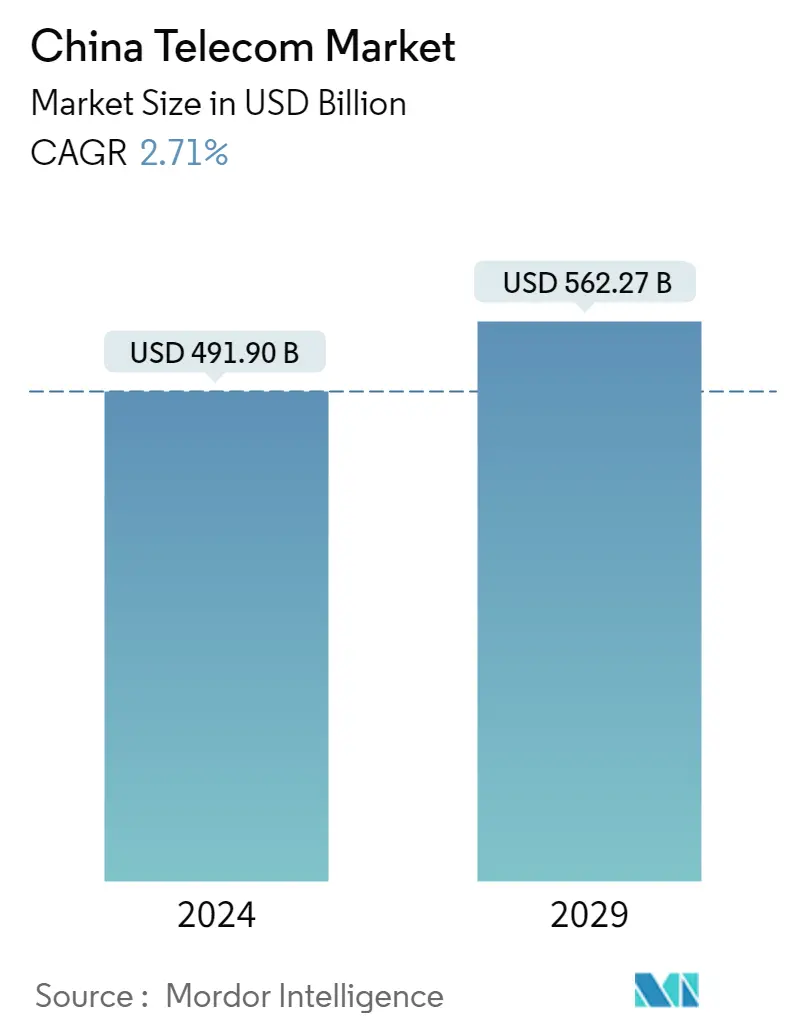
References:
https://english.news.cn/20231223/36996f5176e24d48a5677ddc160c99a5/c.html
China’s Telecom Sector Soars with Big Data and Cloud Computing Growth
https://www.mordorintelligence.com/industry-reports/china-telecom-market
Omdia: China’s 5G network co-sharing + cloud will create growth opportunities for Chinese service providers
After building the world’s largest 5G network with 2.3 million 5G base stations by the end of 2022, China is on track add over 600,000 5G base stations and reach 2.9 million by the end 2023, according to new Omdia market research (owned by Informa). A key milestone in terms of China’s co-building and co-sharing 5G networks recently took place in May 2023, through the 5G network collaboration between all the four service providers in China. Under the organization and guidance of the Ministry of Industry and Information Technology (MIIT), the four major mobile operators in China – China Mobile, China Telecom, China Unicom, and China Broadnet, jointly announced the launch of what they claimed as the world’s first 5G inter-network roaming service trial. The service enables customers to access other telecom operators’ 5G networks and continue using 5G services when outside the range of their original operators’ 5G network.
Ramona Zhao, Research Manager at Omdia said: “Omdia expects inter-network roaming to improve operators’ 5G network coverage particularly in rural areas. Driven by better 5G network coverage, 5G will overtake 4G’s leading position and become the largest technology in China’s mobile market by 2026. By the end of 2028, we anticipate 5G will account for 65.1% of the total mobile subscriptions (including IoT connections).”

An advertisement for 5G mobile service at Shanghai Pudong International Airport. Image Credit: DIGITIMES
Omdia deems China as a 5G pioneer in terms of many areas, including technology innovation, network deployment, and 5G use cases. Driven by the increasing 5G adoption, Chinese service providers’ mobile service revenue and reported mobile (non-IoT) ARPU have all achieved year-on-year (YoY) growth in 2022. China Telecom reported an increase of 3.7% in its mobile service revenue; China Unicom‘s mobile service revenue saw a YoY increase of 3.6%; while China Mobile’s mobile service revenue also increased by 2.5% YoY.
Owing to the digital transformation demand from various state-owned enterprises, cloud services are also considered a growing business for Chinese service providers.
“Omdia recommends that Chinese service providers innovate more applications through the integration of cloud and the 5G network. This will be vital to enable the digital transformation of various industries and the acquisition of new revenue streams,” concludes Zhao.
According to a previous GSMA report, dubbed “The Mobile Economy China 2023”, 5G technology will add $290 billion to the Chinese economy in 2030, with benefits spread across industries.
“Mainland China is the largest 5G market in the world, accounting for more than 60% of global 5G connections at the end of 2022. With strong takeup of 5G among consumers, the focus of operators is now increasingly shifting to 5G for enterprises. This offers opportunities to grow revenues beyond connectivity in adjacent areas such as cloud services – a segment where operators in China have recently made significant progress,” the GSMA report reads.
5G will overtake 4G in 2024 to become the dominant mobile technology in China, according to the report. “4G and 5G dominance in China means legacy networks are now being phased out. While most users have been migrated to 4G and 5G, legacy networks continue to support various IoT services. However, some estimates suggest that legacy networks could be almost entirely shut down in China by 2025,” the study reads.
Chinese vendor Huawei Technologies has secured over half of a major contract to deploy 5G mobile base stations for local carrier China Mobile, according to recent reports by Chinese media.
Huawei obtained over 50% of the total of China Mobile’s centralized procurement program in 2023.
The report also stated that Huawei will provide 5G base stations for different frequency bands. The bands ranging from 2.6 GHz to 4.9 GHz will have around 63,800 stations, divided into two projects, while the number of base stations to operate in the 700 MHz band will be 23,100, divided into three projects. ZTE was the second-biggest winner in terms of base stations, followed by Datang Mobile Communications Equipment, Ericsson and Nokia Shanghai Bell.
References:
China Mobile to deploy 400G QPSK by the end of 2023
China Mobile is preparing to deploy 400G optical links and expects to call its first tenders by the end this year. At the 2023 China Optical Network Symposium on Thursday, Li Han, director of the Basic Network Technology Research Institute of China Mobile Research Institute , gave a speech and revealed that China Mobile has confirmed the availability of 400G technology and will start the centralized procurement of 400G products at the end of this year to promote 400G to enter the commercial stage. “It’s time for 400G, and the industry is looking forward to it.”
 China Mobile completed the world’s first 400G QPSK pilot with vendor partner ZTE in March, achieving high-speed transmission over 5,616 kilometers of ultra-long-distance land real-time live network transmission. The verified computing power network 400G all-optical network technology is the core technology of the next-generation intergenerational evolution of the backbone transport network.
China Mobile completed the world’s first 400G QPSK pilot with vendor partner ZTE in March, achieving high-speed transmission over 5,616 kilometers of ultra-long-distance land real-time live network transmission. The verified computing power network 400G all-optical network technology is the core technology of the next-generation intergenerational evolution of the backbone transport network.
Li Han believes that 400G is an intergenerational technology of optical communication and a disruptive technology. The reason is that 400G optical communication has entered the broadband era, and the C6T+L6T band is disruptive to the entire system including core optical devices. Specific to the application scenario, the backbone network considers the long distance and adopts the QPSK method, and the metropolitan area network considers the cost, and mainly deploys 16QAM-PCS or 16QAM. In different scenarios, different techniques are used.
China Mobile’s 400G research and development has gone through 5 years. From 2018 to 2021, it will mainly study 16QAM-PCS or 16QAM; in 2022, with the development of 130G baud rate optical modules, the industry chain will turn to QPSK driven by the three major manufacturers. This is of decisive significance to the development trend of 400G.
Li Han finally emphasized that 400G still needs to continue to improve technology, such as EDFA, which needs to substantially integrate C-band and L- band . In terms of optical fiber , research on anti-resonant hollow-core optical fiber should be promoted.
In a white paper, China Mobile said Jiuzhou would encompass 400G optical connectivity and a distributed cloud architecture, with edge computing and three levels of latency, from 1 millisecond in the city to 20 milliseconds in the countryside. The paper said the 400G OTN would initially be deployed at major computing hub nodes, then in the backbone.
A major driver of China Mobile’s optical plans is a government scheme to build out China’s national “computing power network” – a chain of data centers and high-speed fiber links that will support the new computer-intensive era of AI, deep learning, 5G Advanced and the industrial Internet.
One key part of this is the East-West plan, in which data from the industrialized eastern seaboard is being hauled to lower cost, renewables-powered data centers in the less developed west over high-speed links. So far China Mobile has deployed more than 40 super-large data centers with more than 1.3 million racks and over 1,000 edge nodes.
Li said the telco’s 400G R&D had initially focused mainly on 16QAM-PCS and 16QAM, but last year had turned to QPSK, driven by breakthroughs from three domestic vendors.
Zhang Bin, vice president of FiberHome’s network business unit, said he believes 400G OTN will dominate optical fiber for the next ten years. But he said Chinese manufacturers would need to invest more in R&D to keep pace with the large-scale rapid rollout
References:
https://www.c114.com.cn/news/22/c22780.html


